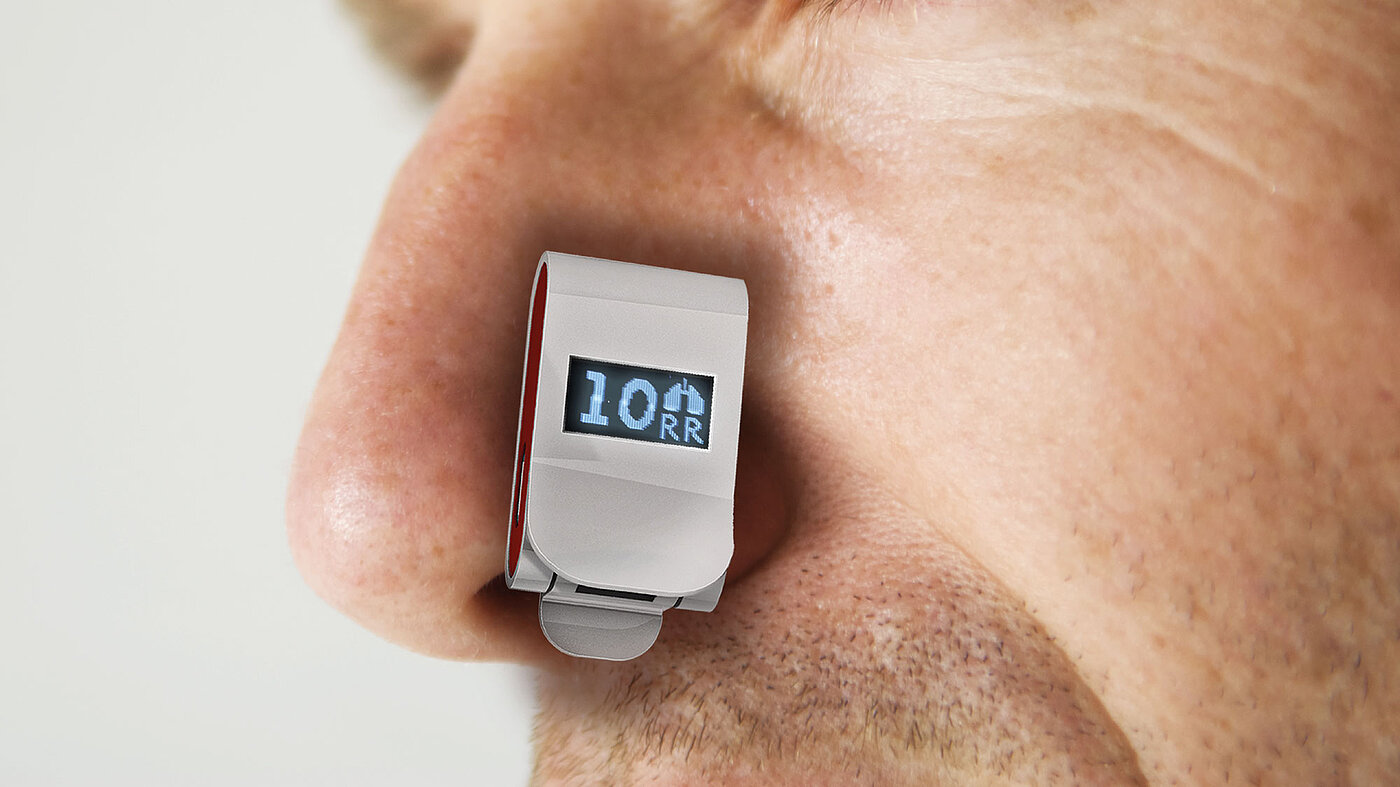Career, design research and work culture – an interview with Ben Strutt from Cambridge Design Partnership
Ben Strutt, who convinced in 2018 with the medical system Klarus in the Red Dot Award: Design Concept, is Head of Design and Innovation at Cambridge Design Partnership. He sees design as a way of creatively thinking and systematically acting as well as a studied discipline. Already in his youth, he came in touch with design – one grandfather designed and built machinery from his home workshop for challenging manufacturing applications, the other restored antique clocks in his spare time. Today, Ben Strutt works cross-functionally with an in-house team of over 120 designers, researchers, engineers and scientists, and their industry partners, to convert challenges into effective end-to-end workstreams which will achieve their innovation objectives.
In an interview with Red Dot, Ben Strutt shares more on design and work culture matters and his biggest career moments.
Red Dot: What comes to you first: business or customer?
Ben Strutt: As a designer, people are implicitly uppermost in your mind as you address new challenges. Over the years I’ve learnt to balance the user-centred view with commercial requirements and the opportunities that can be created through deploying new technologies – but always people first! You could create the best technology in the field, and many have already done that, but if it offers a poor user experience, it will never realise it’s market potential. Despite what some brand-owners like to think, customers are not mindlessly allegiant to their products and services. If something comes along that does the job better, they will switch. ‘Experience’ is the foundation of a design brief, whether explicitly stated or not, and by definition, it is implicitly human.
Have you personally benefitted from preparing for a major project?
Every project I work on is ‘major’ in the sense that I am passionate about what I do, regardless of the scale of the challenge or industry partner, be it start-up or multinational. I have the privilege of being able to influence critical business decisions, and therefore people’s livelihoods. For end-users I may have an impact on quality of life. This is not a responsibility I take lightly.
Were there accomplishments or breakthroughs when preparing for a competition?
Learning about why I didn’t win and what the competitors are doing. Anyone working in innovation knows that experimentation and prototyping is central to what we do – if you are creating informed experiments that might work, even if they fail on some metrics, you will learn something useful. The same mindset applies to a pitch, a project phase or a competition entry. Unless you pause to understand how you could have done a better job, it is a wasted opportunity to refine or pivot your approach and improve chances of future success. Constructive, high quality feedback is like gold-dust, and I believe if we are to keep developing through our lives, we should regularly make the time to reflect, give and receive it.
What is your biggest design career moment?
Careers are filled with ‘moments’ – some very specific, others creep up on you! It would be easy to point at the launch of my first high profile product, the first Dyson Ball-vac (DC15) on which I was one of the lead design engineers at really quite a tender age of 20 years, and more than 20 patents into my career I have never lost the tingle of excitement (and fear!) when I open the box containing a first-off tool moulded part, respectively see a product in-store for the first time. I still feel the excitement when our team creates a really differentiated design solution for a commoditised category, like our award-winning ‘Control’ knives for Zyliss.
Design school never ends, at least for great designers. How do you learn and grow your knowledge and expertise?
I am personally motivated to remain hands-on – it’s the primary way to ensure I never stop learning from everything and everyone around me. I still travel frequently to undertake international research fieldwork, and of course to thought-leadership events globally. Every time I make a new associative connection between human insight and seemingly unrelated sectors, business models, and technologies, I gain a huge sense of reward – the neuroscience of creativity is fascinating!
How would you describe your design research?
Very differently to either market research, by which I mean analysis of today’s solution-centred market, or ‘Insight for Innovation’ research, the cornerstone of which is solution-agnostic functional, social and emotional need. A good primary researcher will go out and explore the relevant world systematically and objectively, but may struggle with the translation, the ‘so what?’, especially if breakthrough innovation is part of the remit. A high-quality industry-standard market research report will not necessarily articulate opportunities for successful concept generation or new product development. The process of translation is critical – and this is where designers come into their own. When a designer sees someone struggling with a problem, they instinctively start looking for solutions. A designer’s practical way of observing formative research, working co-creatively with real people, their challenges, and generating potential solutions is the bridge between the strategic ‘where to play’ to the conceptual ‘how to win’. By default, this applied translation mindset can make it difficult for designers to be successful objective researchers – a trap I am conscious of and a skill I continue to work on!
How do you know if a product is well designed?
It is virtually impossible to create a pithy universal definition of good design, though I do admire Dieter Rams’ principles. Good design has to satisfy both heart and mind, though we can all identify with emotionally charged or socially motivated purchases in which our feelings twist and over-rule practical logic and persuade us to accept the consequences! Some so-called ‘design classics’ would fail the Rams’ test! In my opinion the best design solutions refuse to compromise on either emotional or functional reward – a hard-won algorithm embodying both beauty and operational simplicity. Anyone can appreciate good design, but I would go further: the best judges of good design are not designers, or engineers, or marketers but everyday folks getting on with their lives; the people who naturally reach for the most intuitive products and services around them to achieve an easier or more fulfilling day. Most consumers have little comprehension of how much research, psychology, testing, and obsessive iteration goes into designing a product, that it is completely intuitive, and delivers multi-sensory value – time after time. While the solution may ultimately seem simple, the development process will have been anything but!
When or how do you know that your product has become a success?
Innovation is often described as the successful commercialisation of creativity – and every person in the development process has to have done their job well to achieve that. For me, it’s when people realise you have created a solution to a challenge they have been frustrated by for years, or perhaps didn’t even explicitly know they had, and the solution is so coherent that they say ‘that’s brilliant – why didn’t I think of that?’ Success is when your product or service becomes a source of emotional pride for its owner; or when it maintains position in market for years after it should have been superseded. Or when its resilience or developing personality allow it to be passed on from one person or generation to the next. Perhaps ultimate success is when your product or service becomes a benchmark that allows it to sneak into natural language. We no longer use an online search engine, we “Google”. A “Rolex” has become an enduring metaphor for success, and in time an heirloom whose emotional value only increases with the years that pass. We wrap fragile items without a second thought for Sealed Air’s 1960 trademark “Bubblewrap”. And we brainstorm with “Post-Its” only pausing to question the authenticity of our sticky-backed notelets if a wall of creative jottings begins to succumb to gravity!
How do you decide who gets to do what?
Our heartland is innovation-project delivery, so high quality project leadership is central to everything. From the earliest conversation about a new opportunity we try and make the whole journey as inclusive as possible. We ensure potential project leaders and technical experts of relevant disciplines are involved, give them ownership and allow them to build the professional relationships that are the key for a successful collaboration. The breadth of projects we work on provide opportunities to align the staff with challenges that motivate them. I count myself fortunate to be able to call on such an extraordinary breadth of experience under one roof. In an environment like this it is easier for colleagues at all levels to make the right decisions. The Directors, as you would expect are each responsible for leading and developing different parts of the core and strategic business, but every member of the management team sits in the open plan office and remains very hands-on, which I believe reinforces the culture and sense of working together.
When do you decide to abandon a product or remove a particular feature?
I purse to the reverse principle – a feature should not find its way in to the spec unless it is addressing a clear functional or emotional need. If innovators start with needs and deeply understanding the problem, the developing specification shouldn’t be too far off course. Naturally there is iteration and refinement, and this process should include co-creation and validation with relevant stakeholders – but ultimately the clock is ticking, and the meter is running; following a proven product development process ensures that the appropriate information is available to make decisions confidently at each stage of the process. A product should stop or ‘pivot’ if the business case doesn’t stack up – meaning that the needs, enabling technology, and value realisation model simply cannot be balanced. This decision can be taken as soon as there is enough evidence to highlight insurmountable flaws or insufficient evidence to close the loop. This is not to be confused with routine product development challenges, which provide the perfect stimulus to think harder, or differently, and deliver an improved outcome.
Is consensus always a good thing?
In general, I see consensus as an objective, regardless of the constructive difference of opinion that may be encountered on the journey to get to the best solution… the convergence after the divergence! If you put people who believe in evidenced-based decision-making, in an environment in which they have the empowerment, culture, and resources to push the creative envelope, the outcome is rarely far off track! I would be concerned if the things come too naturally – that we weren’t pushing the boundaries hard enough. I would revert to our mission that we can achieve more together than alone.
How do you say no to people?
It’s easy to forget that ‘no’ can often be positive: ‘No. The evidence shows that the embryonic product should be stopped now – your precious innovation resources would be better invested in the other concept’. Our culture is based on creativity and evidence; we try to share grounded evidence and avoid subjective.










